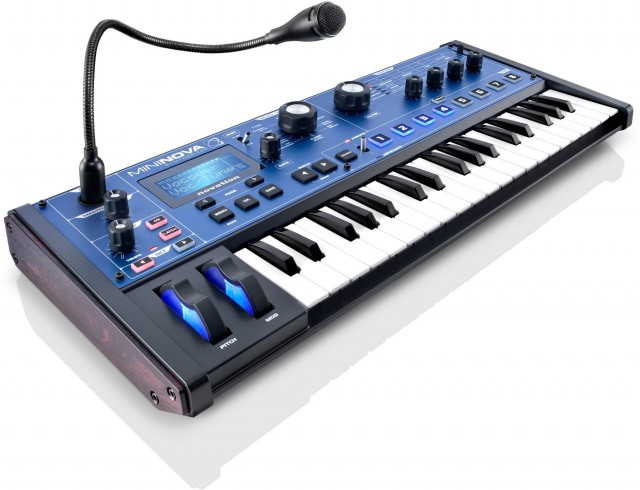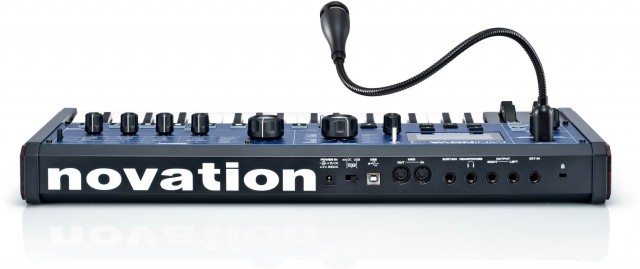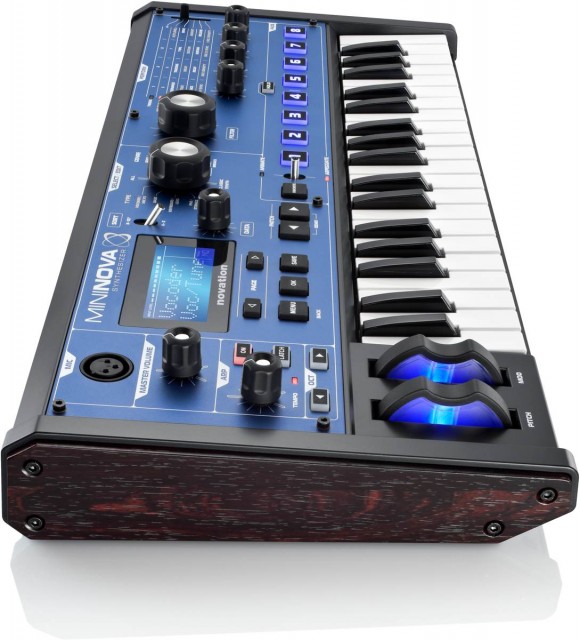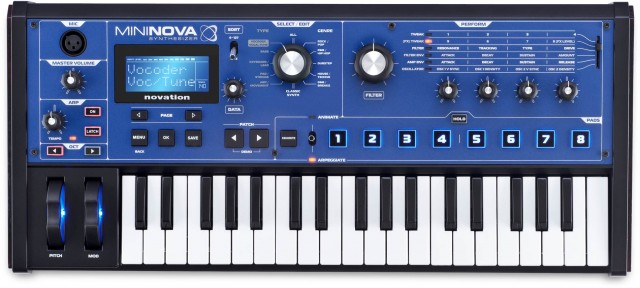Being popular as a person may be a complex formula. But for keyboard synths, “a fun, cute, cheap date” just about covers it. And — sorry, any snobs out there, but no complaints about that. So it is that Novation has a 37-keyboard that combines lots of sound and effects from the company’s UltraNova into a compact body, bringing the price at dealers to about $500 bucks US.
(Actually, to quote Novation’s press release, personally I endeavor to be “compact” and “affordable,” myself, though I don’t think I qualify as “amazingly powerful.”)
It’s impossible to look at this and not think of the Korg microKORG – and little wonder, as that synth has proven a huge hit for all kinds of musicians, including synth first-timers and expert studios alike. But the sound engine here is unmistakably Novation-esque, and Novation has a feature set that should be competitive with other synths in this price range. Of course, for not much more, you begin looking at synths like the Arturia MiniBrute – and there’s an analog-versus-digital deathmatch waiting to happen here, because the digital MiniNova gives you additional sonic flexibility even as the MiniBrute focuses on old-school, everything-gets-a-physical-control, no-menu playability.
One reason to pay special attention to Novation’s new synths is that the designer is Chris Huggett. He’s the guy not only behind Novation’s best synths – Bass Station, SuperNova, Nova, and now UltraNova – but also the 1978 EDP Wasp and OSC OSCar. He’s a designer from the analog era who’s found religion as far as digital. (Despite the name of this site, I take no particular sides in that battle, but I will say – don’t understimate the potential of a digital synth, or in knowing a bit about history, digital and analog alike.)
We’ll take a look at this synth soon, so in the meantime, here’s a look at specs as provided by Novation. No judging yet – this is all on paper:
- 37-note mini-keys. Novation says they custom-designed the keybed; I’ll be interested to feel how this stacks up against the ubiquitous Korg rival.
- Three oscillators, five effects slots, two filters, six envelopes, three LFOs, 36 wavetables. Yes, I love analog synths, but digital does have its advantages.
- Sound and effects engines from the UltraNova.
- Gooseneck mic.
- Vocoder. (Everyone needs one.)
- VocalTune – a “don’t-call-it-AutoTune” pitch effect, for when you don’t want to sound only like a robot but do want to alter your voice, presumably. It’s simple: it corrects your pitch to whatever key you play.
- Arpeggiator “with real-time rhythm performance editing.” (You can see a bit of what they mean by that in the video.)
- “Animate” is interesting – a real-time modulation setting accessed by push buttons with hold and latch. In the video, the effects seem a bit cheesy, but we’ll have to take a closer look.
- Parameter matrix maps controls to four knobs; filter cutoff is always a dedicated control. (The poor copy writer had to explain to people what filter cutoff is, which they says “allows you to always give your sound the ‘wow’ factor.” That’s okay; I don’t know how to explain the sound of a filter sweep, either, other than to make the sound. Actually, it sounds a little like saying ‘wooowwwwwwww.’)
- USB. (powering via USB is possible, too)
- Patch management via plug-in.
- XLR, jack inputs for using the vocoder and effects with external instruments.
- Two mono 1/4″ outputs plus dedicated stereo headphone out.
- Five-pin MIDI input, output, sustain pedal in.
Availability: October
Pricing: US$624.99 list / $499.99 street [no word on international pricing, but that’s an international launch… fingers crossed, oh mighty Euro…]
More videos from Novation:
Vocoder and AutoTune video [which, for some reason, Novation won’t let us embed]
novationmusic.com/hardware-synths/mininova



